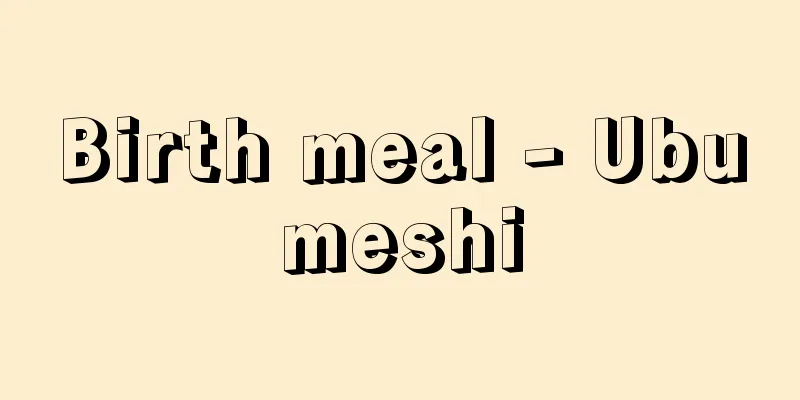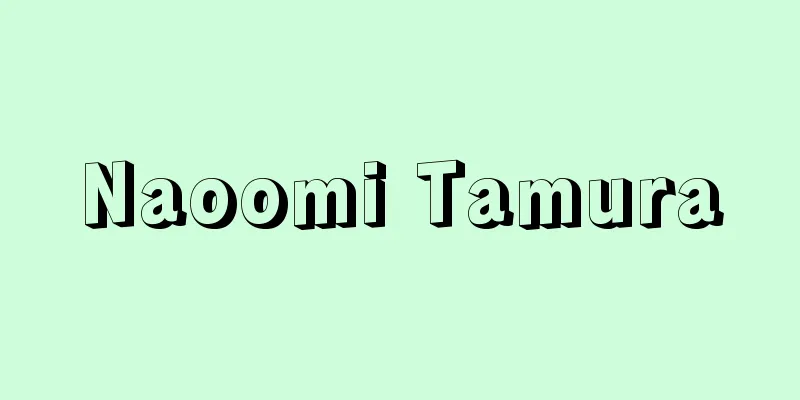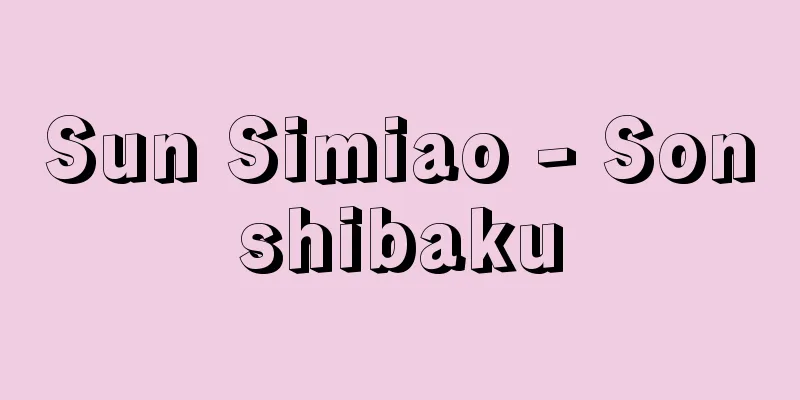Birth meal - Ubumeshi

|
This rice is cooked immediately after birth and offered to the birth god (Ubugami) for the newborn baby and the new mother. It is also called Ubutate-meshi, Ubuya-no-meshi, Obi-meshi, Obitaki-no-meshi, and many other names. In some places, it is customary for the midwife to eat it instead of the newborn baby. There are many popular beliefs associated with birth rice. First, a round stone is placed on the newborn baby's head to make it round and hard. In some places, for girls, an indentation is made so that the baby will have dimples, and chopsticks are placed in the rice (Kumamoto Prefecture). One sho (1.8 liters) of rice is cooked and offered to the birth god, and the rest is then invited to children and women in the neighborhood so that as many people as possible can eat it. In Minamisaku District, Nagano Prefecture, it is said that if a man is among the people eating the rice, the child will lose strength. In Tsushima (Nagasaki prefecture), ubu-no-gohan is a dish where a single bowl of rice is cooked immediately after birth, without any side dishes, and is given to the new mother; cooking only one bowl is the same as the practice of preparing pillow rice for the deceased. In general, in the Kyushu region, there are many cases where people are happy if there are many people who eat ubu-meshi together, and in the Fukuoka region, many places believe that it is good to have visitors share a chopstick of ubu-meshi after offering it to the birth god, or to have as many children and women as possible share it. Although the name ubu-meshi is the same, in the San'in region it refers to the rice eaten on the second or third day, or on the seventh night. Pebbles are placed on this rice; there are various legends that the stones are placed near the local guardian deity or the household god, or that they are picked up from a riverbank or under a raindrop, but in many places they are considered to be the sacred object or a vessel for the birth deity. [Hisako Maruyama] Source: Shogakukan Encyclopedia Nipponica About Encyclopedia Nipponica Information | Legend |
|
出産直後に炊いて産神(うぶがみ)に供え、生児と産婦に供する飯。ウブタテ飯、ウブヤの飯、オビヤ飯、オビタキの飯などと、呼び方も多い。生児にかわって産婆が食べる習わしの所もある。産飯にはさまざまな俗信が伴っている。まず生児の頭が丸くかつ堅くなるようにと丸い石をのせる。女児ならばえくぼができるようにとくぼみをつけたり、飯に箸(はし)を立てる所もある(熊本県)。一生生活に不自由なく、大暮らしをするようにと、1升(1.8リットル)の米を炊いて産神に供え、あとは近所の子供や女の人をよんでなるべくたくさんの人に食べてもらう。このとき男の人が混じると子供の力が抜けると、長野県の南佐久郡ではいう。対馬(つしま)(長崎県)でウブノゴハンというのは、出産直後茶碗(ちゃわん)に1杯だけの飯を炊き、お菜なしで産婦に食べさせるもので、1杯だけ炊くというのは死者の枕飯(まくらめし)の場合と同じ作法である。概して九州地方には、ウブメシの共食者の数の多いことを喜ぶ例が多く、福岡地方では産神に供えたあとのウブメシを見舞客に一箸(はし)ずつ分けて食べてもらうとか、子供と婦人の、なるべく多数に分けて食べてもらうといいという所が多い。同じウブメシという名称でも、山陰地方では2日目、3日目、またはお七夜の飯をいう。この飯には小石をのせるが、石は氏神様や屋敷神のそばから、または川原で生石(いきいし)を拾ってくるとか、雨垂れの下から拾ってくるなど、さまざまの伝承があるが、産神様の御神体、あるいは依代(よりしろ)と考えられている所が多い。 [丸山久子] 出典 小学館 日本大百科全書(ニッポニカ)日本大百科全書(ニッポニカ)について 情報 | 凡例 |
Recommend
Alchi Gompa
…In the Ladakh region, which is surrounded by the...
low birth weight infant
...A birth before 24 weeks of pregnancy where the...
helenien
…This is called color wax. Representative example...
Fu'ād Shihāb (English spelling)
1902‐73 Lebanese soldier and politician. Born into...
Royal Niger Company
The Royal Niger Company was a British company esta...
Prerogative - Experience
This refers to the powers that belong to the Empe...
Additional numbering - Oibanzuke
A ranking of plays that is issued when a new or co...
Film director - eiga kanto (English spelling)
The director is the creative director who directs...
metropolitan county
…England and Wales were divided into 52 geographi...
Jupiter Latiaris (English spelling) JupiterLatiaris
...There is a legend that Romulus dedicated a tem...
Regional Police Academy
…The National Police Academy has the National Pol...
Sansho - Sansho
The highest organ of the central government establ...
Mina Ishizaka
...Poet and critic of the Meiji period. Born in K...
Tenryo - Tenryo
A colloquial name for territories directly contro...
Ishikawa-so
…Located in the center of Ishikawa County, it is ...









